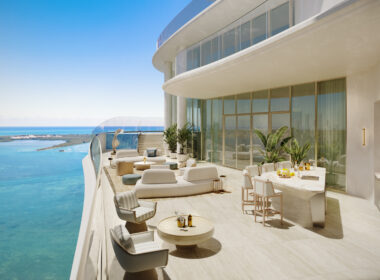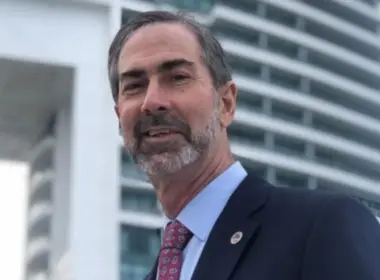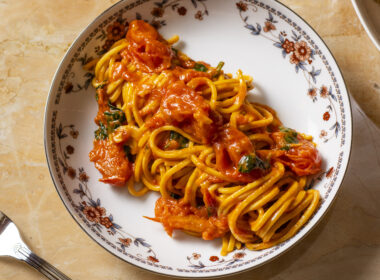Doral has burgeoned into a logistics hub, epitomized by businesses like Heads or Tails Inc. The city’s growth from its inception as the Doral Hotel and Country Club reflects resilience and adaptability amid rapid urban development.
When Ramon Mareno launched his fish importing company west of Miami International Airport 25 years ago, the area was a sparsely settled swath of unincorporated Miami-Dade County. Like other businesses in the area, he was attracted by low land cost and proximity to the airport. He started with a small warehouse and truck, then opened a fish market, and then expanded to a larger warehouse.
Fast forward to today. Mareno’s Heads or Tails Inc. now offers 250 different types of fresh, frozen, and salted seafood products from Nicaragua, Ecuador, Guatemala, Mexico, Panama, Costa Rica, Venezuela, Trinidad, Turkey, Chile, Indonesia, Canada, and Norway — all coming to Miami then redistributed throughout the United States. His warehouse has grown to 15,000 square feet, with cold storage capabilities.
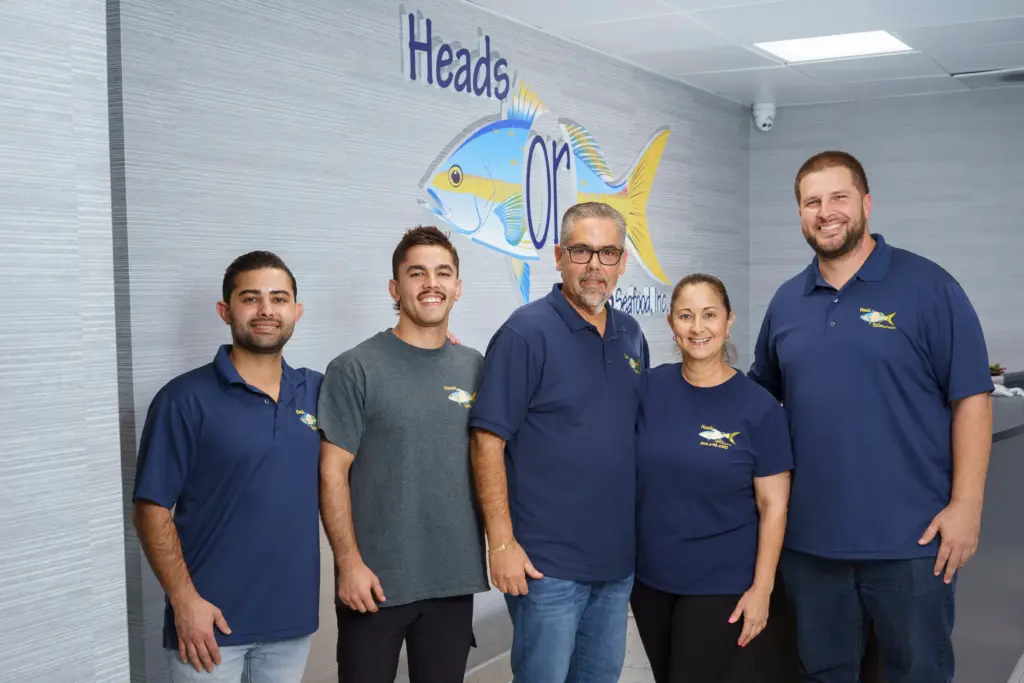
Just as importantly, he now lives in Doral, the city which grew up around him. “If you’re working seven days a week, you don’t want to spend half an hour in a commute. We never thought we would move to Doral but the fact that you can have your business and live three minutes away is a huge plus,” says the CEO. “And it’s a beautiful city.”
THE BIRTH OF A CITY
Moreno’s trajectory as a business owner and resident is a perfect mirror for the inception, growth and now maturity of Doral. It all began almost 75 years ago, when Doris and Alfred Kaskel bought 2,400 acres of swampland for $50,000 in an area where there were more cows and horses than residents. In 1962, Doris and Alfred opened the world-renowned Doral Hotel and Country Club, using a combination of their names.
The club’s name – Doral – became the area’s epithet and for decades defined its identity. In the second year of operation, the Kaskels hosted the first Doral Open Invitational, Florida’s major PGA event. Following changes in ownership over the years, Donald Trump acquired the club in 2012 for $150 million, rebranding it as Trump National Doral Golf Club. Renowned globally for its golf courses, notably the Blue Monster, the club remained a significant destination and hosted the PGA Tour Tournament until 2016.
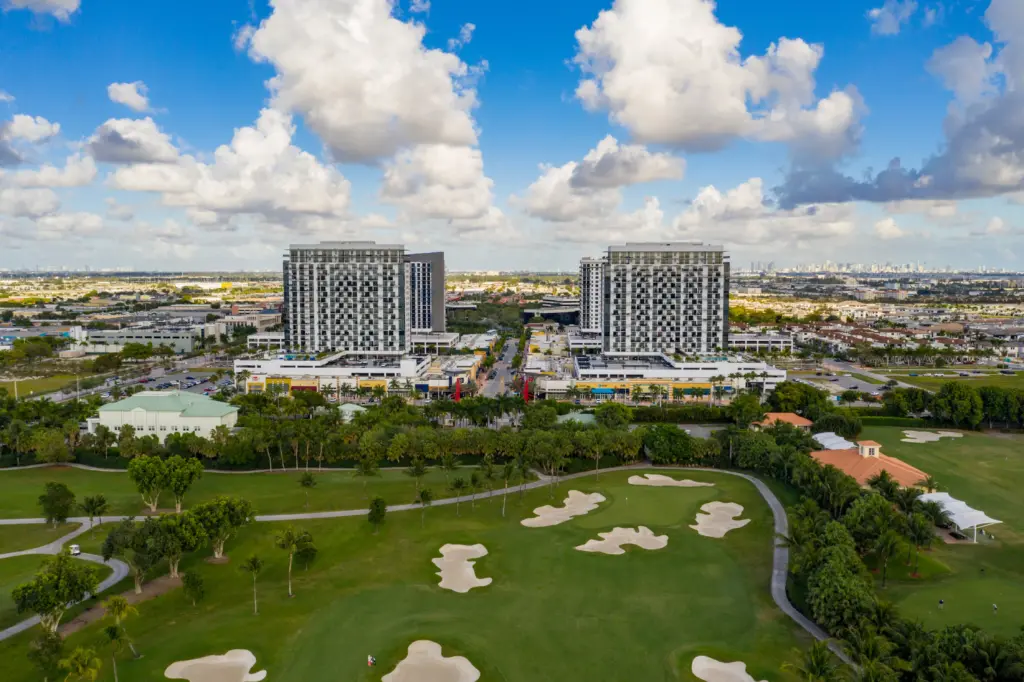
In the early 1980s, Doral witnessed an initial growth spurt with the development of Doral Estates by Bill Kaskel, the grandson of Doris and Alfred. This was soon followed by a partnership with Lennar Homes to create Doral Park. The naming convention of these communities after the club became a recurring trend. “That’s what really catapulted Doral’s name, but it was still just West-Dade at that time. You still had a lot of swamp land and people thought they were crazy,” says Doral’s mayor, Christi Fraga.

Despite more families moving in, the area lacked essential amenities like stores, schools, and parks. Still, early residents were drawn to the area due to its low density and affordable housing, despite the scarcity of facilities. Traffic was minimal and the landscape was dominated by farms.
Incorporation efforts began in 1995 as residents sought more services. Despite initial setbacks – including legal disputes over the use of the Doral name – the community persisted, eventually achieving incorporation in 2003 after a prolonged battle to secure its own local government. Among the early challenges: The State had tried to charge Doral a mitigation fee when incorporating. “They basically charge you to exist,” says the founding mayor of Doral and current County Commissioner for District 12 Juan Carlos Bermudez. “So, we took that fight to Tallahassee. It took us three years, but we finally won it and it was a big victory.” If the city were to pay that today, says Bermudez, it would be on the hook for around $25 million a year out of its $85 million budget.

Today Doral is a vibrant home to over 75,874 residents, a 77% increase in the last eight years, according to city officials. Residents come from all over, with a notable presence of Hispanics, particularly Venezuelans, Cubans, and Colombians. The Venezuelan community has made up such a large portion of the residents – still almost a third of the city – that it was nicknamed “Doralzuela.”
“The growth that we had from Venezuelans moving here and establishing Doral as their home really helped shape our city,” says Mayor Fraga. The large Spanish-speaking population (95 percent of residents speak Spanish) also encouraged the biggest Spanish-broadcasting network, Univision, to open operations in Doral. Nor was that firm alone; some 100 multinationals, small and large, now call Doral home, and planned areas like Downtown Doral, City Place Doral, and Midtown Doral have made it a highly attractive destination for living, working, investing, and recreating.


BECOMING A HOME
In 2014, Armando Codina was the first to introduce the concept of a downtown for Doral, though he had been active in the area well before then. As one of South Florida’s most successful – and impactful – developers, Codina had for decades been the largest builder of high-end industrial and office space in the Airport West submarket, part of which would later become Doral.


Today, Codina Partners has or is building 1 million square feet of Class A office space, 5,000 single-family and multifamily housing units, the city’s Government Center and its City Hall, public green spaces, and an upcoming senior living facility. But its largest and most transformative project is the creation of Downtown Doral. After a former Kroger office park went bankrupt, Codina saw an opportunity and purchased the 125 acres. “It didn’t take a rocket scientist to think, ‘This is where Doral should have a downtown,’” says Codina, “and I decided I would create it. [So] I went to the founders of the city and I said, ‘Listen you can’t be a city without a downtown. You are an emerging city with no revenue yet, so I will give you a downtown without a penny of city money.” Codina did require some concessions such as the downtown designation, but not a single resident opposed the development.

Now, with the help of partners like Miami-based Arquitectonica (which created the designs), the area has become a mixed-use development known as Downtown Doral, featuring international restaurants like Bulla and Dragonfly. The development is currently still growing, with plans for further retail expansion; when finished it will have more than 70 retail shops and restaurants. With families in mind, Codina also added a tuition-free charter school to be the center of the community and maintain walkability. “The school has been one of the engines of Downtown Doral,” says Codina.
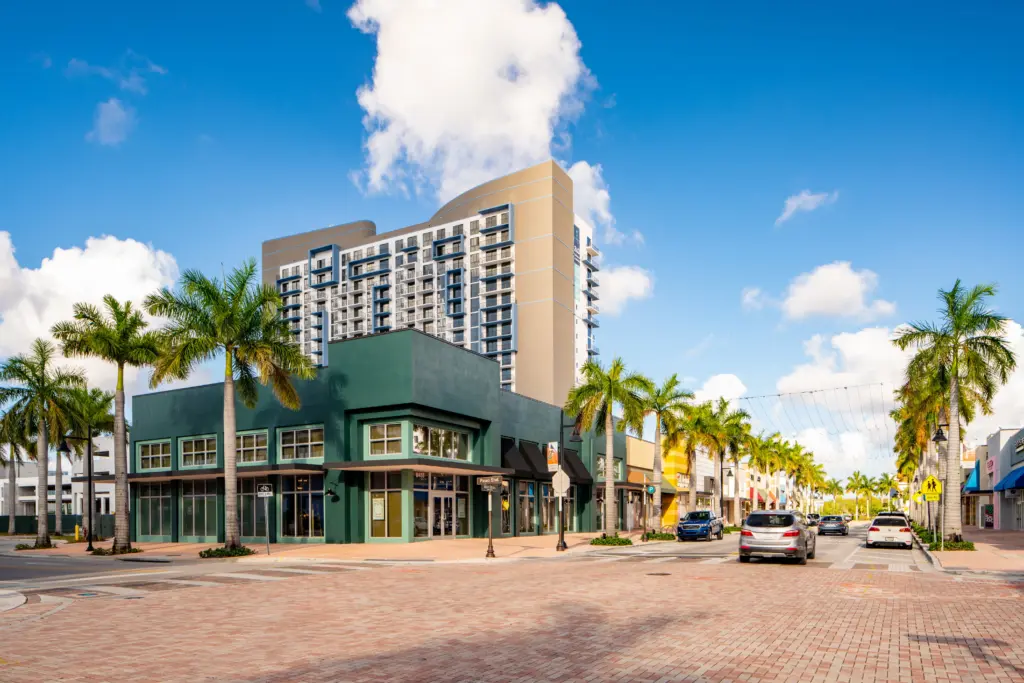

Adding to the city’s cultural mix is the Doral Contemporary Art Museum (DORCAM), which emerged from a grassroots initiative by a group of friends who had been organizing exhibitions in unconventional spaces like warehouses. On the weekends, they’d host pop-up shows for what they called the Art Industry Movement. “In one exhibition, the mayor showed up and I said to him ‘Doral is cool, but you don’t have a museum,’” says Marcelo Llobel, director of the Doral Contemporary Art Museum – aka DORCAM. “Having a cultural institution is important.” Established in 2017, “Our contribution is being more accessible for all kinds of artists, designers, architects, and from different countries,” says Llobel.
in Downtown Doral. For more information visit LUXDoral.com.
LOGISTICS EPICENTER
Doral’s economy is characterized by a diverse mix of industries – it is home to over 9,000 businesses – but logistics and trade are the bread and butter. There are over 2,600 trade and logistics-related companies in Doral, 250 corporate headquarters, and 100 multinational corporations, including numerous Fortune 500 firms. But why Doral? The simple answer: location.
The city is strategically located adjacent to Miami International Airport, with its massive network of flight connections, especially to Latin America and the Caribbean. It is bound on the east by SR 826 (Palmetto Expressway), on the west by the Florida Turnpike, and to the south by SR 836 (Dolphin Expressway). Its business-friendly environment (with over 150,000 workers) is further enhanced by the presence of the Miami Free Zone, which provides duty-free warehouse facilities, attracting international trade opportunities.
“Doral is an industrial hub. All the largest companies in the world have warehouses here,” says Frank Trelles, vice president of State Street Reality. Regarding warehousing, the city is currently at 3 percent vacancy compared to the national average of 6 percent. “Doral is like the star island of warehousing,” says Trelles. Numerous companies have located in the city to capitalize on its logistical advantages, from large corporations like DHL, FedEx, and Amazon, to small mom-and-pop businesses.
DHL Express has been in Doral since 1987, before the city was born. “We first opened our operations in Doral [because] proximity to the airport was a big draw, but also the number of companies that were moving into the rural area made a lot of sense to us,” says Nemer Abohasen, the company’s general manager for the U.S. “It’s literally a 10-minute drive from the airport. So that’s facilitated trade tremendously, being able to get to the customers as soon as possible.”
Indeed, with Miami – and MIA – having become the gateway to Latin America, DHL is one of many companies that use Doral as a strategic location to service the region. The top five export destinations for DHL Express are Chile, Brazil, Colombia, Argentina, and Peru. The top five import origins are China, Hong Kong, Great Britain, Colombia, and Brazil.
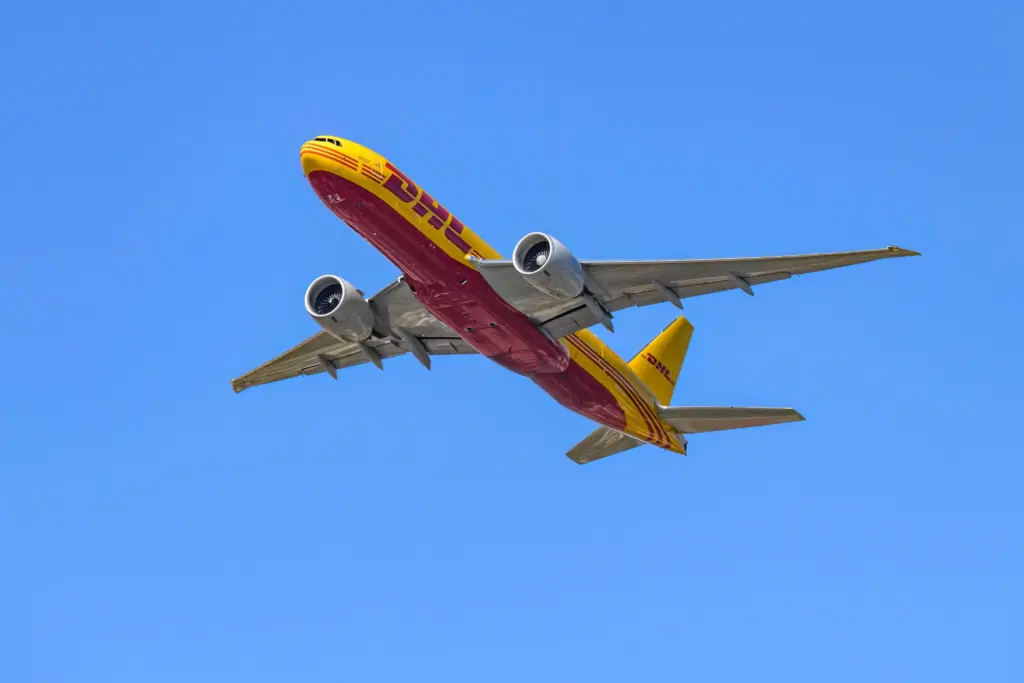
DHL Express also partners with multiple freight forwarders and other international businesses already in Doral; by some measure as much as half the freight volume that moves through the Miami Customs District (i.e. South Florida) ends up in Doral warehouses. “When Miami started growing, the airport started growing, the seaports started growing, so the industry grew and became perfectly suitable for business,” says Hebert Castro, Sales Manager for CTS Global Supply Chain Solutions, a global freight forwarding and logistics company.
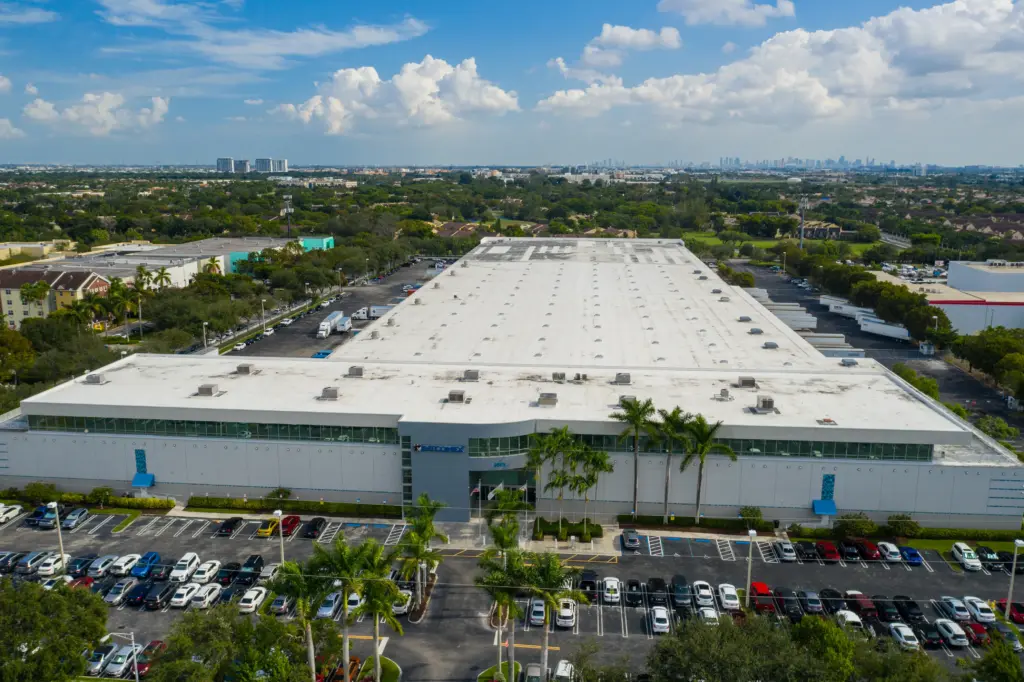
CTS recently chose Doral as its first hub for dry cargo, shortly following with cold storage capabilities to take advantage of MIA being the number one U.S. airport for perishable products. “What happens here doesn’t happen in other ports,” says Barbara Pimentel, President of CTS. “Right now, our volumes for freight are huge because it comes in not only through MIA, but on the ocean side with Port Everglades and PortMiami…. It gives us a dynamic of volume of perishables that come through here so that we can capture and tap into that market.” CTS is currently adding operations in Brazil, Chile, Argentina, Peru, and Colombia.

Prologis is another global logistics – and real estate – firm that has long been developing warehouses in Doral. In the past year, they have accumulated some 1.2 billion square feet of industrial warehouses across 19 countries, with Doral accounting for 10 million square feet of that space. “From a location perspective, Doral is probably the best on the map to access those [other] important logistics hubs – and then to also be able to distribute from there to the rest of the world,” says Jason Tenenbaum, Prologis Senior Vice President and Market Officer for South Florida. “It’s extremely central and it’s great access.”
Large global firms like FedEx, DHL, and Amazon use Prologis’ warehouses in Doral to reach Latin American markets, but most of Prologis’ Doral tenants are small businesses renting under 10,000 square feet of warehouse space, with 1,000 or fewer employees. This is to Prologis’ advantage; according to Trelles, those lease rates have increased more than the larger spaces in price per square foot.
Many of Prologis’ smaller tenants are in the business of trade, specifically with Latin America and the Caribbean. Most of their owners come from South American descent and/or with visa programs like EB-5, where migrants are granted a visa after investing a certain amount of money. Many end up opening their South American operations in Doral and shortly realize they want to live there, too.
KEEPING IT CHILL
While most of the city’s warehouses do not include cold storage, at least until a tenant comes in and adds it, Doral’s cold storage capabilities are extensive, serving as a vital link in the supply chain. Especially for the seafood and flower wholesale industries, cold storage ensures the freshness and quality of inventory. With Miami International Airport now the leading U.S. entry point for perishables, having high-quality temperature control capabilities means importers and exporters of perishable products flock to Doral to be as close to the airport as possible.
Heads or Tails Inc., for example, depends on cold storage to maintain the freshness of is seafood imports, which it then distributes through over 120 deliveries a day, mostly to restaurants, fish markets, and Hispanic supermarkets, like the Bravo chain. “Doral is the ideal place for our businesses. It’s strategic and it’s next to the airport. Ninety percent of the fish that we sell comes through MIA, only five minutes away,” says Moreno.

Every day, large volumes of both fish and flowers are unloaded at the airport and then trucked to Doral. Nicknamed “the floral city,” Doral now handles roughly 86 percent of the approximately 4.5 billion fresh-cut flowers imported into the United States every year. “Doral is the floral hub. We have a ginormous airport that is importing fruits and vegetables and all kinds of stuff from all over the world,” emphasizes Fernando Ortega, General Manager of Jet Fresh Flowers (see story pg. 52).

BANKING ON TRADE
With Doral emerging as a world-class destination for commerce and trade, numerous financial institutions are also jumping on board. In addition to the regional Federal Reserve Bank, the city is home to global financial institutions like Sabadell United Bank, Espírito Santo Bank, City National, Ocean Bank, and U.S. Century Bank.
Last year, Banesco Bank USA opened a new three-story, 16,000-square-foot headquarters housing over 300 employees, centralizing all its offices. Banesco USA is an independent Florida state-chartered bank founded in 2006 with over $3.5 billion in assets and six different business centers in South Florida and Puerto Rico. The bank offers international banking and trade financing, mostly catering to international customers for their personal and commercial needs in the U.S. They currently manage over $1.1B in depository balances from clients in Latin America as well as offering mortgage services for nonresidents, providing financing for approved clients from abroad to buy property in South Florida. The bank is also currently running a multi-lingual campaign to help entrepreneurs navigate the U.S. market and open a company.
“Doral has been constantly growing. There’s always construction and new planned residences,” says Luis Pereda, Senior Vice President Head of International Banking. “So that goes hand in hand with why Banesco moved in. We’re actively looking to invest in the community and to support more business owners in their finances.” Pride of place, however, goes to U.S. Century Bank, the first bank headquartered in Doral (in 2002). Oscar Gomez, Executive Vice President for Global Banking, attributed the bank’s decision to Doral’s early status as an industrial hub with global companies moving products through the city, and wanting to be near those clients (see story pg. 56).
WORLD CLASS HEALTH CARE
Another significant addition to the city’s roster of services is healthcare, introduced relatively recently. Healthcare providers like Jackson Health, Baptist Health, and UMHealth have all increased their presence in the city.
In 2021, Jackson West Medical Center became the first academic medical center in Doral. After purchasing 27 acres for $38.5M, the site became an outpatient campus for adult and pediatric patients with a free-standing emergency room, as well as a children’s ambulatory center for specialized pediatric care. At about the same time, Baptist Health Hospital opened in a 43,000 sq. ft. two-story facility offering 24/7 emergency care as well as diagnostic imaging, surgery, inpatient pharmacy, etc. Baptist also has several urgent care centers in the city.
Now, the University of Miami Health (UHealth) is expanding its reach in Doral, completing phase two of its Ambulatory Medical Center Project, UHealth at Doral (the first phase, with urology, oncology, and dermatology services, opened in 2022). The new facility, expected to open in September, will be a six-story, 160,000 sq. ft. center right in the heart of Downtown Doral, providing primary care, cardiology, neurology, and ophthalmology through its No. 1 ranked Bascom Palmer Eye Institute.
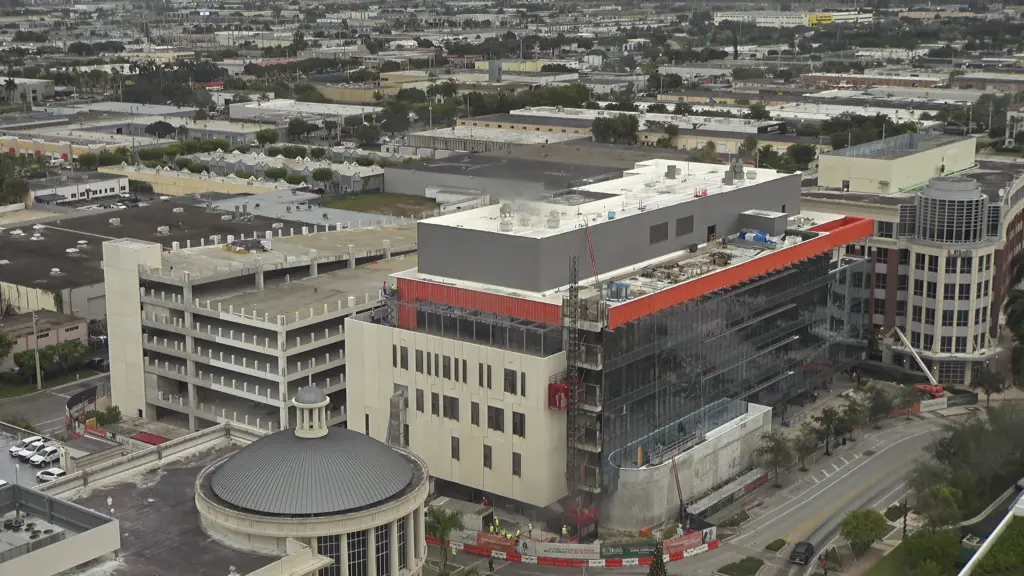
According to the university Miami-Dade County is investing $7.7 million in the project, which will total 178,000 square feet of space between the new building and the existing one. “A lot of families are moving into Doral, and we noticed patients and family members from Doral traveling to UHealth locations across Miami-Dade to seek care. So, it was our mission to bring health care closer to home,” says Vandana Pathak, Assistant Vice President for ambulatory services at the University of Miami Health System.
NAVIGATING THE FUTURE
In many ways, Doral is now becoming a victim of its own success. Due to the rapid growth in population, urban development, and new businesses, the city is finally beginning to run out of space. “I wish I would have had some foresight to what Doral was going to become as quickly as it happened,” says Mayor Fraga, “As a city, we made some mistakes that right now we’re kind of paying the price for. We did not land bank enough as a city… Even if we wanted to build a public works facility, for example, we don’t have land to do it.”
While that assessment may be a little dire – the city did set aside 78 acres for a massive Doral Central Park – with high demand for its limited remaining supply of space, the cost of operating in Doral has increased dramatically. Today, according to Trelles of State Street Realty, the average cost of warehousing in Doral is a minimum of $300 a square foot. Before COVID, it was at $110 a square foot. “When these prices went up so high, it pushed a lot of the smaller companies out of the market,” says Trelles. “It’s happening all around Miami. More people are coming in but at the same time, many are getting pushed out.” To achieve affordability, it’s becoming more common, for example, for companies in Doral to hire a larger third-party logistics provider that can leverage efficiencies of scale.
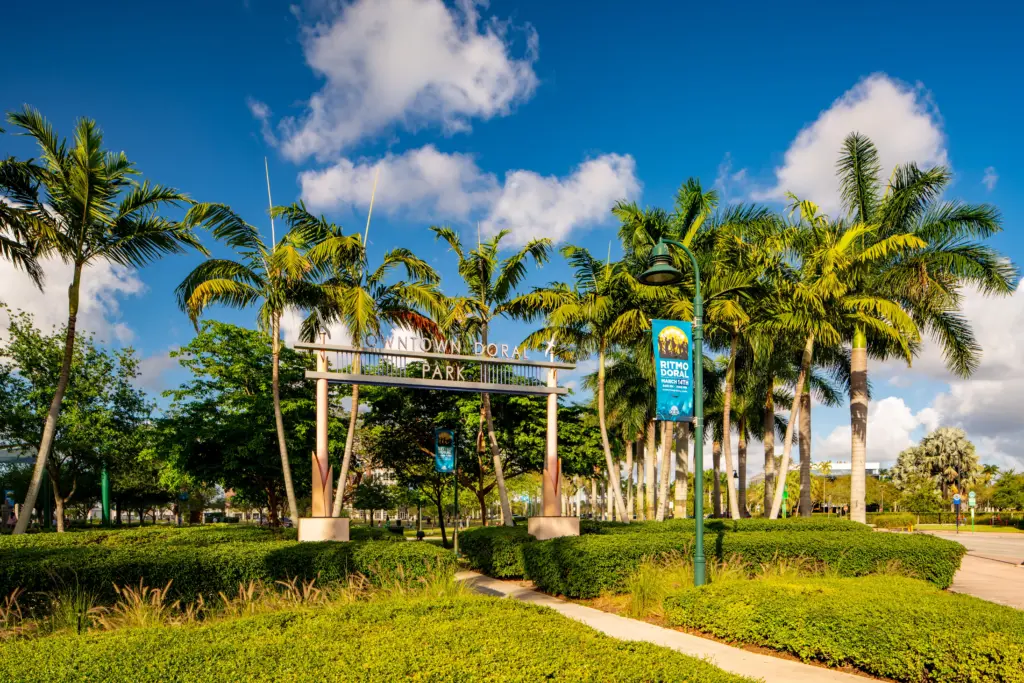
Still, the demand for warehouse space, which was fundamental to the city’s incarnation, shows no signs of diminishing. “If you go anywhere in Miami, you’re going to see cranes – new buildings and thousands of new apartments and condos are going up, and they’re going to get filled” says Trelles. “You’re going to need more toilet paper, more cell phones, more tires – and all that’s stored in a warehouse.” In a perfect world, as the population grows, warehouse space should also grow. But in Doral’s case, it is hemmed in by the Everglades.
“The scarcity of land creates a very interesting landscape for our industrial real estate market in South Florida and specifically in Doral,” says Tenenbaum of Prologis. “That will make us even more thoughtful about our warehouse design.” In other words, the industry must get creative. “We have to look at opportunities that are three to five years down the road,” says Tenenbaum. His company is currently working on a development just outside Doral to build a million square feet of warehouse space in four buildings, after purchasing ten plots of land to consolidate the property. They are also developing a multi-story logistics facility for an e-commerce customer, the first vertically integrated warehouse design in Florida. That warehouse will be almost a million square feet, laid out over three separate floors. Like areas closer to the coast, going vertical is a new trend for the county.
“It’s so important to protect our industrial businesses, not just for Doral and for Miami-Dade, but for South Florida since it’s a huge economic engine,” says Mayor Fraga. “The logistics, import and export… and then all the industries that fall into that – flower, food technology, and so forth. It’s a huge economic driver for Doral.”
Another major issue echoed by the industrial community is the buildup of traffic, a consequence of Doral’s remarkable growth thanks to its strategic central location, transportation access, proximity to major regional assets, supportive government services, and favorable growth and development policy. Part of the congestion stems from worker inflow, something that is avoided by simply living in the city.
To that end, Doral has proactively invested in enhancing the lifestyle of its citizens, from its new urban centers providing the amenities of entertainment, dining, and medical campuses, to its parks, with a focus on both existing spaces and the creation of new green areas such as Doral Central Park. This Park, when finished, will be one of the region’s largest, and will feature an indoor recreational facility, pools, walking paths, tennis and basketball courts, multi-purpose fields, picnic areas, a skate park, and an open-air amphitheater.
“The most important accomplishment to me was creating a sense of community. We took an area in the western part of Dade County where there wasn’t anything and built a community,” says Founding Mayor Juan Carlos Bermudez. “We had three main goals for our master plan of the city: One, to have more parks. Two was to create a downtown overlay district. And three was to get the medical industry in the city. We were able to get those goals accomplished.” With such accomplishments under its belt, Doral’s momentum continues, reflecting the city’s resilience and commitment to sustained growth.


